Gerhard Hirt, Reiner Kopp978-3-527-30679-4, 978-3-527-31155-2, 978-3-527-31360-0, 978-3-527-31426-3
Table of contents :
Thixoforming: Semi-solid Metal Processing……Page 2
Contents……Page 8
Preface……Page 18
List of Contributors……Page 20
1.1 Introduction……Page 24
1.2.1 Basic Findings Concerning the Rheology of Metals in the Semi-solid Condition……Page 27
1.2.2 First Steps Towards a Semi-solid Metal-forming Technology……Page 29
1.3 Today’s Technologies of Semi-solid Metal Forming……Page 30
1.3.1.1 Direct Chill Casting……Page 32
1.3.2.1 Heating Furnaces and Strategies……Page 33
1.3.2.2 Control of the Billet Condition During and After Reheating……Page 36
1.3.3.1 The UBE New Rheocasting Process……Page 37
1.3.3.5 The Continuous Rheoconversion Process (CRP)……Page 38
1.3.3.9 Method of Billet Production Directly Using Liquid Electrolysed Aluminium……Page 39
1.3.4 Process Alternatives for Semi-solid Forming……Page 40
1.3.5.1 AlSi7Mg (A356, A357)……Page 41
1.3.5.2 Other Aluminium Alloys……Page 42
1.3.5.3 High Melting Point Alloys (i.e.Steels)……Page 44
References……Page 48
Part One Material Fundamentals of Metal Forming in the Semi-solid State……Page 52
2.1 Introduction……Page 54
2.2 Temperature Sensitivity S* and Solid–Liquid Fraction……Page 55
2.3 Slurry Formation in the Rheo- and Thixo-routes……Page 57
2.4 Proneness to Segregation and Hot Tearing……Page 59
2.5 Impact of Variations in Alloy Composition……Page 63
2.6 Conclusion……Page 64
References……Page 65
3.1 Introduction……Page 66
3.2.1 Material Prerequisites for the Thixoforming of Steel……Page 67
3.2.1.1 Rheological Behaviour of Thixotropic Metal Suspensions……Page 68
3.2.1.2 The Sponge Effect……Page 70
3.2.1.3 Temperature Interval Size and Temperature Sensitivity……Page 71
3.2.1.4 Microstructure in the Partial Liquid State……Page 74
3.2.2.1 Structural Parameters……Page 77
3.3 Alloying Systems……Page 84
3.3.1 Tool Steel X210CrW12……Page 85
3.3.2 Roller-Bearing Steel 100Cr6……Page 87
3.4.1 Development of the Structural Parameters of Steel X210CrW12……Page 90
3.4.1.1 Metallographic Analysis of Quenched Specimens from the Three-Phase Area……Page 92
3.4.1.2 Metallographic Analysis of Quenched Specimens from the Two-Phase Area……Page 94
3.4.1.3 Microprobe Examinations of the Quenched X210CrW12 Specimens……Page 95
3.4.1.4 EBSD-Measurements of Quenched X210CrW12 Specimens……Page 99
3.4.2 Determination of the Structural Parameters of Steel 100Cr6……Page 100
3.4.2.1 Metallographic Analysis of Quenched Specimens of Steel 100Cr6……Page 101
3.4.2.2 Microprobe Examination of the Quenched 100Cr6 Samples……Page 102
3.4.2.3 EBSD Measurements of Quenched 100Cr6 Specimens……Page 103
3.4.3 Concluding Assessment of the Microstructure Parameter Determination……Page 104
3.5.1 Thermodynamic Preliminary Considerations and Microstructural Examinations Concerning the Structural Regulation of Steel 100Cr6 by Means of TiN Particles……Page 105
3.6.1 Structural Changes and Properties of the Tool Steel X210CrW12……Page 109
3.6.1.1 Thermodynamic Preliminary Considerations and Microstructural Examinations……Page 110
3.6.1.2 Examinations Concerning Long-Term Heat Resistance……Page 119
3.6.3 Final Evaluation of the Heat-treatment Strategies……Page 121
3.7 Conclusions……Page 123
References……Page 124
4.1 Production of Raw Material for Thixoforming Processes……Page 128
4.2.1 Methodology for Tuning of Commercial Alloys for Semi-solid Processing by Means of Grain Refinement……Page 131
4.2.2 Adaptation of the Chemical Composition……Page 133
4.2.3 Influence on the Form Factor of the Primary Phase……Page 134
4.2.4 Modification of the Eutectic Structure……Page 136
4.2.6 Characteristics of the Raw Material……Page 137
4.3.1 State of the Art……Page 139
4.3.2 The System Al–Li–Cu……Page 141
4.3.5 The System Al–Li–Cu–Mg–Ag……Page 142
4.3.6 Effects of Alkali Metal Contaminants……Page 143
4.4.1 Thermochemical Modelling……Page 144
4.4.2 Choice of a Suitable Basis System……Page 146
4.4.3 Fine Tuning of the Grain Refinement for Al–Li Alloys……Page 147
4.4.4 Assessment of the Raw Material Development Programme……Page 148
4.5 Consideration of the Forming Pressure on Thixoalloy Development……Page 149
4.5.1 Experimental……Page 150
4.5.2 Results of High-pressure DTA……Page 151
4.5.3 Effect of the Solidification Pressure on the Microstructure……Page 153
4.5.4 Possible Impacts of High Pressure for the Thixoforming Process……Page 154
4.6.1 Thixocasting……Page 155
4.6.2 Rheocasting……Page 157
4.7 Production of Al–Li Demonstrators by Rheocasting……Page 160
4.8.2 Thermochemical Metal–Salt Equilibria……Page 162
4.8.3 Experimental Validation of the Thermochemical Calculations……Page 163
References……Page 166
5.1.1 General……Page 170
5.1.3 Scheil–Gulliver Calculations……Page 172
5.2.1 Phase Diagram……Page 173
5.2.2 Solidification……Page 174
5.2.3 Determination of Liquid Fraction……Page 175
5.2.4 Origins and Consequences of Compositional Variations……Page 176
5.2.5 Enthalpy and Heat Capacity……Page 178
5.2.7 Melting……Page 179
5.2.8 Suitability for Semi-solid Processing……Page 181
5.3.2 Solidification……Page 182
5.3.3 Compositional Variations……Page 183
5.3.5 Suitability for Semi-solid Processing……Page 184
5.4 Calculations for the High-speed Steel HS6-5-2……Page 186
References……Page 188
Part Two Modelling the Flow Behaviour of Semi-solid Metal Alloys……Page 190
6.1 Empirical Analysis of the Flow Behaviour……Page 192
6.1.1 Structural Phenomena Influencing the Flow Behaviour……Page 193
6.1.2.1 Approach from Fluid Mechanics……Page 195
6.1.3 Approach from Solid-state Mechanics……Page 197
6.1.5.1 Rotational Rheometer……Page 198
6.1.5.2 Capillary Rheometer……Page 200
6.1.5.3 Vertical Capillary Rheometer……Page 201
6.1.5.4 Horizontal Capillary Rheometer……Page 202
6.1.5.5 Compression Test……Page 205
6.1.6.1 Rotational Rheometer……Page 206
6.1.6.2 Capillary Rheometer……Page 212
6.1.6.3 Compression Tests……Page 216
6.2.1 Motivation……Page 219
6.2.2.1 Material Models……Page 220
6.2.2.2 Discretization Methods (Numerical Solution Techniques)……Page 222
6.2.3 Software Packages Used……Page 223
6.2.4.1 One-phase, Finite Difference, Based on Flow-3d……Page 224
6.2.4.2 Two-phase, Finite Element Based on PETERA……Page 225
6.3 Simulation of Cooling Channel……Page 231
6.3.2 Determination of Grain Nucleation Parameters……Page 232
6.3.3 Process Simulation……Page 233
6.3.4 Summary……Page 238
References……Page 240
7.1 Introduction……Page 244
7.2 Basic Concepts of Micromechanics and Homogenization……Page 245
7.3.1.1 Morphological Pattern……Page 246
7.3.1.2 Internal Variable……Page 248
7.3.1.3 Local Behaviours……Page 249
7.3.2.1 Step a……Page 250
7.4.1 Isothermal Steady-state Behaviour……Page 252
7.4.2 Isothermal Non-steady-state Behaviour……Page 255
7.4.3 Non-isothermal and Non-steady-state Behaviour……Page 257
7.5 Conclusion……Page 258
References……Page 260
Part Three Tool Technologies for Forming of Semi-solid Metals……Page 262
8.1 Introduction – Suitable Tool Concepts for the Thixoforming Process……Page 264
8.2 Thin-Film PVD/PECVD Coating Concepts for Die Materials……Page 270
8.3 PVD and PECVD Coating Technologies……Page 272
8.4 Multifunctional PVD Composites for Thixoforming Moulds……Page 274
8.4.1 Deposition Process Development of Crystalline PVD Al2O3……Page 277
8.4.1.2 Results and Discussion……Page 278
8.4.1.3 Summary of the Development of the TiAlN–γ-Al2O3 Bilayer System……Page 279
8.4.1.5 Experimental Details for the Development of γ-Al2O3 on an Industrial Coating Unit……Page 280
8.4.1.6 Results of the Deposition of γ-Al2O3on an Industrial Coating Unit……Page 281
8.4.2.2 Results and Discussion……Page 283
8.4.2.5 Results of the Deposition of t-ZrO2on an Industrial Coating Unit……Page 286
8.4.3 Model and Near Application Tests……Page 288
8.4.4 Applicability of PVD-Coated Dies in Steel Thixoforming……Page 290
8.4.5 Perspectives for the Application of PVD-Coated Dies in Steel Thixoforming……Page 291
8.5 Developing Al2O3 PECVD Coatings for Thixoforming Moulds……Page 292
8.5.1 Experimental Procedure……Page 293
8.5.2.1 Chemical Composition and Constitution……Page 295
8.5.2.2 Film Morphology and Porosity……Page 298
8.5.2.3 Mechanical Properties……Page 300
8.5.3 Conclusions……Page 303
8.6.1 Candidate Die Materials……Page 304
8.6.2 Ceramic Die Concepts for Steel Thixoforming……Page 306
8.6.3.1 Characteristic Load Profile and Die Material Selection……Page 308
8.6.3.2 Corrosion Experiments and Forming Series……Page 309
8.6.3.3 Corrosion Mechanisms and Forming Performance……Page 311
8.6.3.4 Applicability of Silicon Nitride Dies in Steel Thixoforming……Page 315
8.6.4.1 Die Materials and Tool Characteristics……Page 317
8.6.4.2 Tool Design and Construction……Page 319
8.6.4.3 Forming Performance and Wear Resistance……Page 321
8.6.4.4 Applicability of Self-heating Ceramic Dies for Steel Thixoforming……Page 322
8.6.5 Perspectives for the Application of Bulk Ceramic Dies in Steel Thixoforming……Page 323
8.7 Conclusions and Perspectives……Page 324
References……Page 326
Part Four Forming of Semi-solid Metals……Page 332
9.1 Casting of Semi-solid Slurries……Page 334
9.2 SSM Casting Processes……Page 335
9.2.1 Developmental History of the Part Liquid Aluminium Processing……Page 337
9.3.1 Inductive Heating for Steels: Adaptation and Process Control……Page 342
9.3.2.2 Process-adapted Shot Chamber System……Page 346
9.3.2.3 Technological Design Layout……Page 348
9.3.3 Model Tests……Page 349
9.3.3.1 Investigations on Mould Filling Behaviour (Step Die)……Page 350
9.3.3.2 Determination of Flow Length Capabilities (Meander Die)……Page 351
9.3.3.3 Examinations of the Wear Behaviour of the Form Tools……Page 353
9.3.4.1 Impeller……Page 358
9.3.4.2 Kitchen and Diving Knives……Page 360
9.4 Rheoroute……Page 365
9.4.1 Cooling Channel Process……Page 366
9.4.1.1 Parameters: Seed Crystal Multiplication on the Cooling Channel……Page 367
9.4.1.2 Parameters: Cooling to the Process Temperature……Page 372
9.4.1.3 Simulation Results……Page 373
9.4.2 Rheo Container Process (RCP)……Page 378
9.4.3 Demonstrator: Tie Rod……Page 380
9.4.3.3 RCP: AlLi2.1Mg5.5……Page 381
9.4.3.4 Thixocasting of Tailored AlLi2.1Mg5.5……Page 383
9.4.3.5 Cooling Channel Process: A356……Page 385
9.5.2 Thixocasting of Steels……Page 387
References……Page 388
10.1 Introduction……Page 392
10.2 Forging in the Semi-solid State……Page 394
10.3.1 Induction Process……Page 396
10.3.1.1 Heat Transfer Equations……Page 398
10.3.1.3 Control of Inductive Heating……Page 400
10.3.2 Thixoforging and Thixo Lateral Extrusion of Aluminium……Page 406
10.3.3 Thixo Lateral Extrusion of Steel……Page 408
10.3.4 Thixoforging of Steel……Page 410
10.3.5 Thixojoining of Steel……Page 412
10.3.6.1 Feedstock Magazine and Unloading Unit……Page 414
10.3.6.5 Master Process Controller……Page 415
10.3.6.6 Control of the Forming Process……Page 417
10.3.7 Rheoforging of Steel……Page 418
10.4.1.1 Radiation……Page 422
10.4.1.2 Heat Transfer Coefficient Between Workpiece and Die……Page 423
10.4.2 Simulation of a Thixoforged Component……Page 424
10.5 Conclusion……Page 428
References……Page 430
11.1 Introduction……Page 434
11.2 State of the Art……Page 435
11.3.2 Non-isothermal Tool Concept……Page 439
11.4.1 Experimental Strategy, Tools and Process Parameters……Page 441
11.4.2 Extrusion Performance and Bar Analysis……Page 443
11.4.3 Upscaling of Isothermal Thixoextrusion……Page 447
11.4.4 Summary and Discussion……Page 450
11.5.1 Experimental Strategy, Tools and Process Parameters……Page 451
11.5.2 Extrusion Performance and Evaluation for Experiments Without Cooling……Page 452
11.5.3 Estimation of the Material Dwell Time Required in the Extrusion Channel……Page 455
11.5.4 Extrusion Performance and Evaluation for Experiments with Cooling……Page 456
11.5.5 Numerical Simulation of the Thixoextrusion Process……Page 459
11.5.6 Summary and Discussion……Page 462
11.6 Conclusion……Page 463
References……Page 465
Index……Page 466
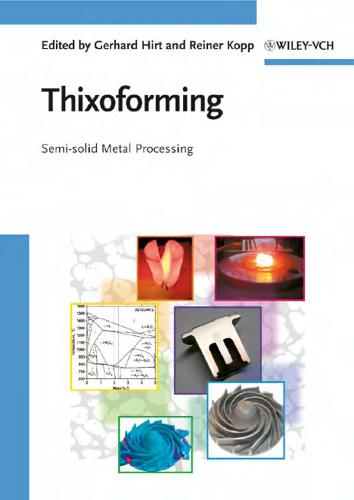

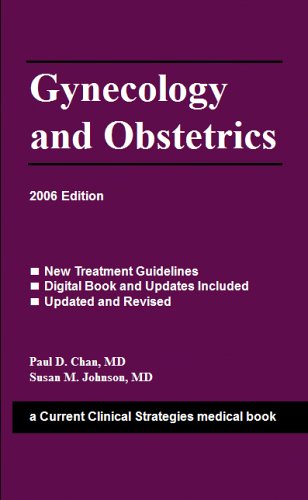
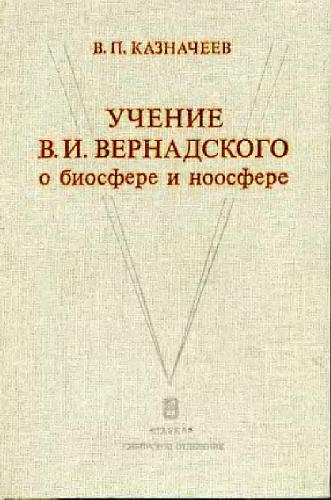
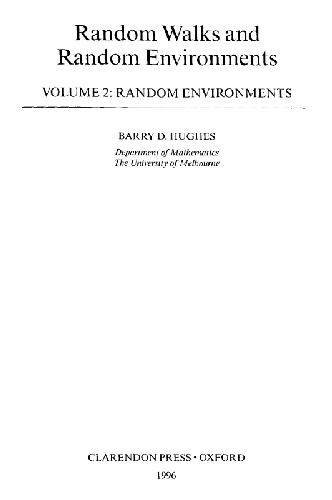
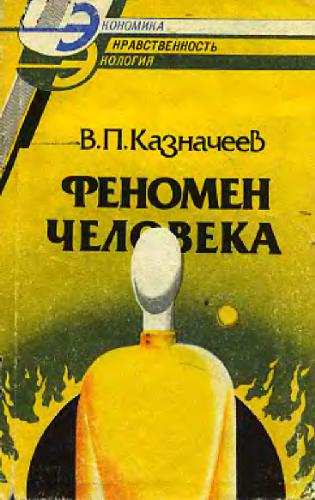

Reviews
There are no reviews yet.